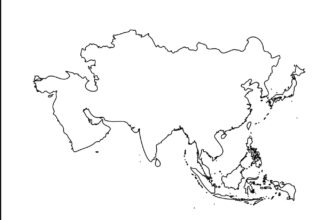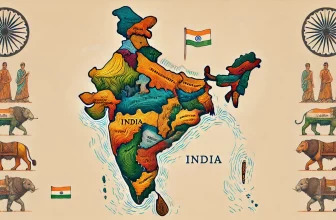India experiences diverse climates, with some regions facing extreme heat during the summer months. The hottest regions in India are typically located in arid or semi-arid areas, particularly in desert and lowland regions. Here’s a list of the 10 hottest places in India, known for their consistently high temperatures.
The 10 Hottest Regions in India:
1. Sri Ganganagar – Rajasthan
- Average High Temperature: 41°C from May to July
- Location: Rajasthan
- Significance:
- Sri Ganganagar, located in the northwestern part of Rajasthan, is one of the hottest places in India, with summer temperatures regularly exceeding 41°C.
- Known as the “Food Basket of Rajasthan,” this region experiences extreme heat due to its desert climate.
2. Churu – Rajasthan
- Average High Temperature: 40°C during summer
- Location: Rajasthan
- Significance:
- Churu, often called the “Gateway to the Thar Desert,” experiences extreme heat with temperatures crossing 50°C during peak summer.
- The region’s dry, arid conditions and proximity to the Thar Desert contribute to the scorching heat.
3. Jaisalmer – Rajasthan
- Average High Temperature: 40°C during summer
- Location: Rajasthan
- Significance:
- Known as the “Golden City,” Jaisalmer is located in the heart of the Thar Desert.
- Summer temperatures in Jaisalmer often soar around 40°C, compounded by the dry desert air and intense sunlight.
4. Jodhpur – Rajasthan
- Average High Temperature: 40°C during summer
- Location: Rajasthan
- Significance:
- Jodhpur, also known as the “Blue City,” experiences intense heat during the summer.
- Due to its location near the Thar Desert, temperatures regularly exceed 45°C, making it one of the hottest places in Rajasthan.
5. Kurnool – Andhra Pradesh
- Average High Temperature: 40°C during summer
- Location: Andhra Pradesh
- Significance:
- Kurnool is known for its tropical climate, experiencing temperatures from 26°C to 46°C.
- The region’s summer heat can be intense, with temperatures regularly reaching 45°C.
6. Vijayawada – Andhra Pradesh
- Average High Temperature: 45°C during May
- Location: Andhra Pradesh
- Significance:
- Vijayawada, known as the “Oven of Andhra Pradesh,” is famous for its scorching summer temperatures.
- The city experiences temperatures above 45°C during the peak of summer, with high humidity adding to the discomfort.
7. Titlagarh – Odisha
- Average High Temperature: 40°C during summer
- Location: Odisha
- Significance:
- Titlagarh, in Odisha, experiences high temperatures during the summer, with average highs rising to 43°C.
- The city lies in the rain shadow of the Eastern Ghats, leading to dry and hot conditions during summer months.
8. Ramagundam – Telangana
- Average High Temperature: 47.3°C
- Location: Telangana
- Significance:
- Ramagundam, known for its thermal power stations, experiences extreme temperatures during summer.
- Summer highs frequently exceed 45°C, with the region being affected by the heat island effect due to its industrial infrastructure.
9. Wardha – Maharashtra
- Average High Temperature: 45°C during summer
- Location: Maharashtra
- Significance:
- Wardha, located 80 km southwest of Nagpur, is known for its extreme summer heat.
- The temperature in Wardha can rise up to 50°C, making it one of the hottest places in Maharashtra.
10. Delhi – Delhi
- Average High Temperature: 36°C during summer
- Location: Delhi
- Significance:
- The capital city, Delhi, experiences high temperatures, with summer highs often crossing 45°C.
- The combination of urbanization, high humidity, and scorching heat makes Delhi one of the hottest metropolitan areas in India.
To Sum Up
These regions consistently experience some of the highest temperatures in India, particularly during the summer months. The combination of geographical factors, such as proximity to deserts, low elevation, and dry conditions, contributes to the extreme heat observed in these areas. Understanding these climatic conditions is crucial for planning travel, agricultural activities, and implementing strategies to mitigate the effects of heatwaves.





